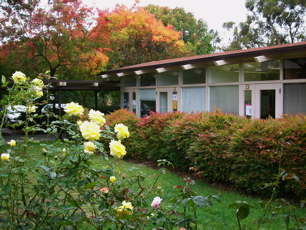I’m trying very hard to cut down on my driving, so when I needed to go to Berkeley last night, I decided to take CalTrain commuter rail to the Millbrae station, and transfer there to BART for the rest of the trip.
After we left the San Mateo station, we were scheduled to go express to Millbrae, so I got up to stand near the doors. Not far from the San Mateo station, the train came to a dead stop. I looked out the window, and we weren’t near any station.
Then one of the train crew made an announcement over the public address system: “Ahh, we are stopped here because the train has just hit a white male,” he said. His voice sounded a little unsteady. “We’ll have to stay here until the police come….” The man was under the fifth car of the train.
I sat back down again. Years ago, I was on the train heading into Boston when the train hit someone, and we had to wait for over an hour before we got going again. I remembered hearing then that the police treated the train as a crime scene, which they had to document before the train could move again.
I sat and read a book. Every once in a while, a member of the train crew would walk up or down the aisle with expressions that ranged from blank to unhappy and sick at heart. After a while, I saw police and EMTs walk by. They did not hurry, so I assumed the man was dead. A member of the train crew announced that we would have to wait for the coroner to come and make his investigation. We waited. A couple of southbound trains passed on the other track; there had been no trains moving at first, but now the dispatcher was letting the southbound trains go. I saw more police walk by, and a couple of people with the word “Sheriff” on the back of their shirts. We waited. I saw Amtrak personnel (I guess Amtrak had the contract to run CalTrain’s service) walked by, wearing hard hats and carrying clipboards.
Around me, people were talking. You could tell that we were all thinking about the recent spate of CalTrain suicides, and we were all thinking that this must have been another suicide. Some northbound trains passed us on the other track. Finally, more than an hour after we had stopped, the announcement came that we had a new train crew on board — presumably the other train crew had to stay to answer police questions — and we got underway.
I felt crummy the rest of the evening. It was like passing a really bad accident on the highway, only worse because I was pretty sure that whoever had died had committed suicide. In a way, committing suicide by throwing yourself under a train is an incredibly selfish thing to do — from the expressions of the CalTrain crew, you could tell that they were sickened by what had happened. And what a horrible way to go. I couldn’t get rid of the bad feeling all evening.

